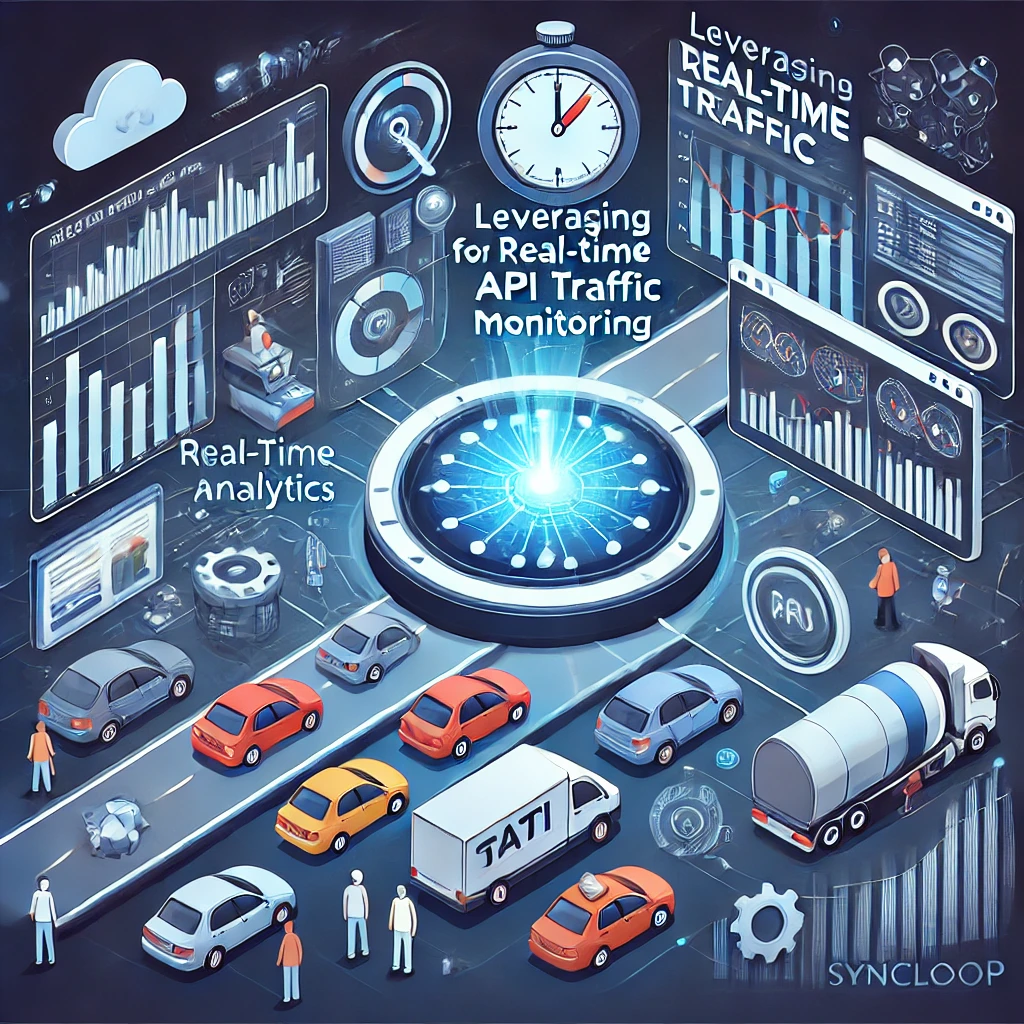Leveraging Syncloop for Real-Time API Traffic Monitoring

Syncloop offers a comprehensive suite of tools for real-time API traffic monitoring, providing actionable insights and robust analytics to manage API ecosystems effectively. This blog explores how Syncloop simplifies API traffic monitoring and best practices for leveraging its features.
Importance of Real-Time API Traffic Monitoring
Real-time API traffic monitoring is critical for:
- Performance Optimization: Identifying and resolving latency or bottleneck issues.
- Anomaly Detection: Detecting unusual patterns that may indicate security threats or system malfunctions.
- Usage Analytics: Understanding traffic trends to optimize resource allocation.
- Scalability: Anticipating and handling spikes in traffic effectively.
- Compliance: Ensuring APIs operate within service-level agreements (SLAs) and industry standards.
Challenges in Monitoring API Traffic
- High Data Volume Managing large-scale API traffic data in real time.
- Anomaly Identification Differentiating between legitimate traffic spikes and malicious activities.
- Integration Complexity Ensuring monitoring tools integrate seamlessly with diverse API environments.
- Latency Impacts Monitoring systems must not add significant latency to API operations.
- Actionable Insights Extracting meaningful insights from raw traffic data to inform decisions.
How Syncloop Enhances Real-Time API Traffic Monitoring
Syncloop provides advanced capabilities to overcome the challenges of API traffic monitoring:
- Real-Time Dashboards Visualize traffic data, including request rates, response times, and error trends, in real time.
- Traffic Analytics Analyze traffic patterns by endpoint, geographic location, or user segment.
- Anomaly Detection Identify unusual traffic patterns with customizable thresholds and alerts.
- Latency Metrics Monitor API response times and pinpoint performance bottlenecks.
- Security Monitoring Detect and respond to potential security threats, such as DDoS attacks or unauthorized access.
- Scalable Monitoring Handle monitoring for APIs across high-traffic environments without performance degradation.
- Custom Alerts Configure real-time alerts for specific events, such as increased error rates or traffic surges.
Steps to Monitor API Traffic in Real Time with Syncloop
Step 1: Set Up Monitoring Tools
Activate Syncloop’s real-time monitoring features for your APIs. Configure:
- The endpoints to monitor.
- Key metrics such as latency, throughput, and error rates.
Step 2: Analyze Traffic Patterns
Use Syncloop’s traffic analytics tools to examine:
- Request and response volumes by endpoint.
- Geographic distribution of traffic.
- Peak usage times and seasonal trends.
Step 3: Detect and Respond to Anomalies
Enable Syncloop’s anomaly detection to identify irregular traffic patterns. Examples include:
- Sudden spikes indicating potential DDoS attacks.
- Unusual geographic traffic sources.
- Increased error rates on specific endpoints.
Step 4: Monitor Latency and Performance
Track latency metrics to ensure APIs meet performance benchmarks. Use Syncloop to:
- Identify high-latency endpoints.
- Analyze the impact of increased traffic on response times.
Step 5: Configure Custom Alerts
Set up alerts for key events, such as:
- Surpassing traffic thresholds.
- SLA breaches.
- Authentication failures or unauthorized access attempts.
Step 6: Visualize Insights
Leverage Syncloop’s real-time dashboards to visualize traffic data. Share insights with stakeholders to inform decisions about scaling or optimization.
Step 7: Optimize APIs
Use insights from Syncloop to optimize API performance. Focus on:
- Scaling resources to handle peak traffic.
- Caching frequently accessed data to reduce backend load.
- Refining rate limits to prevent abuse.
Best Practices for Real-Time API Monitoring
- Define Key Metrics Focus on metrics that directly impact performance and user experience.
- Set Meaningful Alerts Avoid alert fatigue by configuring alerts only for critical events.
- Monitor Security Continuously Use Syncloop’s security monitoring features to detect unauthorized access and potential attacks.
- Enable Comprehensive Logging Maintain detailed logs for all API interactions to aid debugging and auditing.
- Optimize for Scalability Ensure monitoring systems can handle traffic surges without affecting API performance.
Example Use Case: Streaming Platform
A streaming platform leverages Syncloop for real-time API traffic monitoring:
- Traffic Analysis: Monitor API usage during popular events or premieres.
- Anomaly Detection: Identify sudden spikes in traffic that may indicate abuse.
- Latency Metrics: Ensure low latency for streaming APIs during peak traffic.
- Custom Alerts: Notify teams of increased error rates or SLA violations.
- Optimization: Scale resources dynamically based on traffic insights.
Benefits of Using Syncloop for Traffic Monitoring
- Enhanced Visibility: Gain a clear understanding of API traffic and performance.
- Proactive Issue Resolution: Detect and address problems before they impact users.
- Improved Security: Protect APIs against potential threats with real-time monitoring.
- Scalability: Monitor high-traffic APIs without compromising performance.
- Actionable Insights: Use data-driven insights to optimize API performance and scalability.
The Future of API Traffic Monitoring
As APIs grow in scale and complexity, real-time traffic monitoring will remain a cornerstone of API management. Syncloop empowers organizations to monitor, analyze, and optimize API traffic seamlessly, ensuring reliability, security, and exceptional user experiences.
Image Description
A conceptual illustration of real-time API traffic monitoring with Syncloop, showcasing dashboards, traffic analytics, and anomaly detection. The image highlights seamless tracking of API performance and security metrics.
Back to Blogs